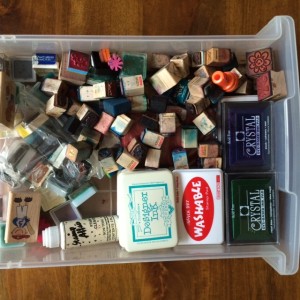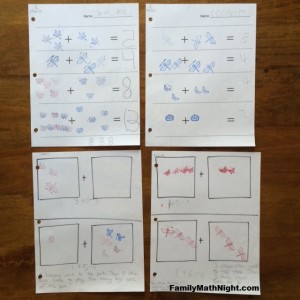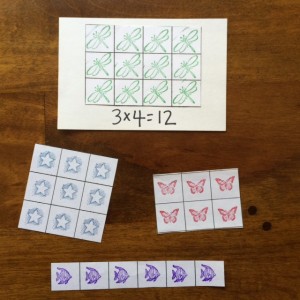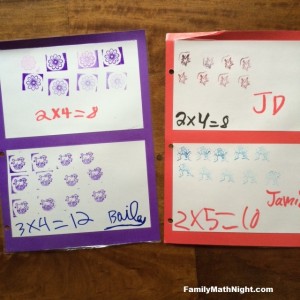Rubber Stampin’ Math – Part 1
I know it’s not quite spring yet but I’m a little anxious for it to start. It seems like it’s been a long winter. So, to encourage spring to get a move-on, I did a little spring cleaning. And that’s when I re-discovered my drawer full of rubber stamps and colorful stamp pads.
These stamps and stamp pads were a staple in my third, fourth, and fifth grade classroom. And when I ran centers in K-2, I used them there, too. I loved how I was able to touch on so many different math concepts in a way that was fun for kids.
So I’m going to share with you, in two parts, some of the simple, fun, and mathematically powerful activities I did using these fabulous materials.
Part 1: Equations, Expressions, and Arrays
Every opportunity I get I try to put students in charge of creating their own math problems. It’s more interesting for them that way. Plus I learn a lot about their math personalities. Do they know how to create a problem and then solve it? Do they stick with simple and easy problems or do they push themselves a little? Can they explain why they did what they did?
So one day in Kindergarten during centers I pulled out the rubber stamps and stamp pads and had students create their own equations and expressions. They loved it! It was a new material for them plus they got to complete the task the way they wanted. The best part for me was that I got to observe how they did it. A win/win!
Below are examples of what some of their work looked like. For the bottom activity sheets I asked them to come up with a story to describe one of their expressions to me. Since my time was limited and my focus was on the math and not the writing, I did the writing. The bottom left story reads, “1 ladybug went to the park. Then 5 other bugs came to play. How many bugs were at the park?”
In second and third grade, I had students create arrays. This fits so nicely into CCSSM 2.OA.C.4 and 3.OA.A.1.
Next time in Rubber Stampin’ Math Part 2, we’ll explore generalizing patterns – the foundation to algebra. Stay tuned. Until then…
…happy stamping!



